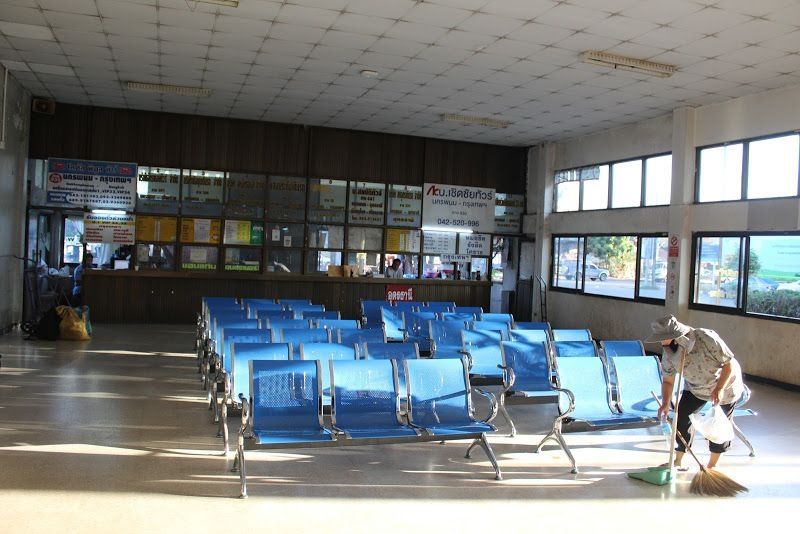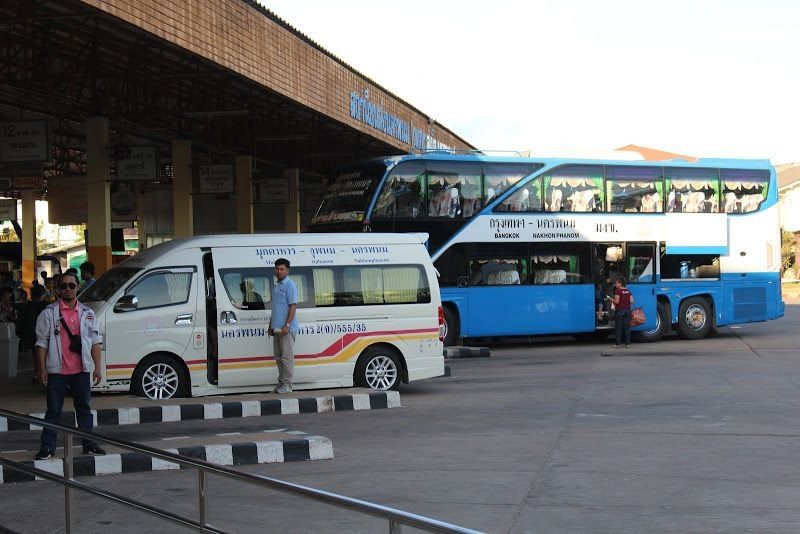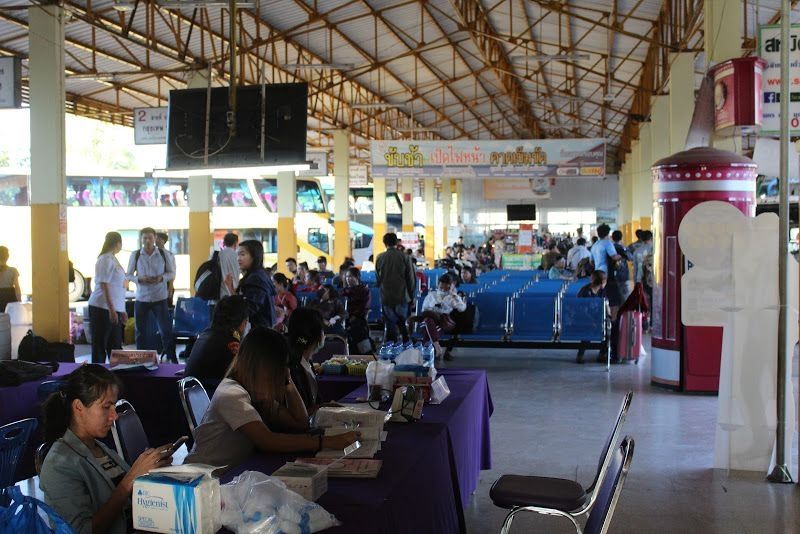Thailand Bus Travel
Thailand Bus Travel
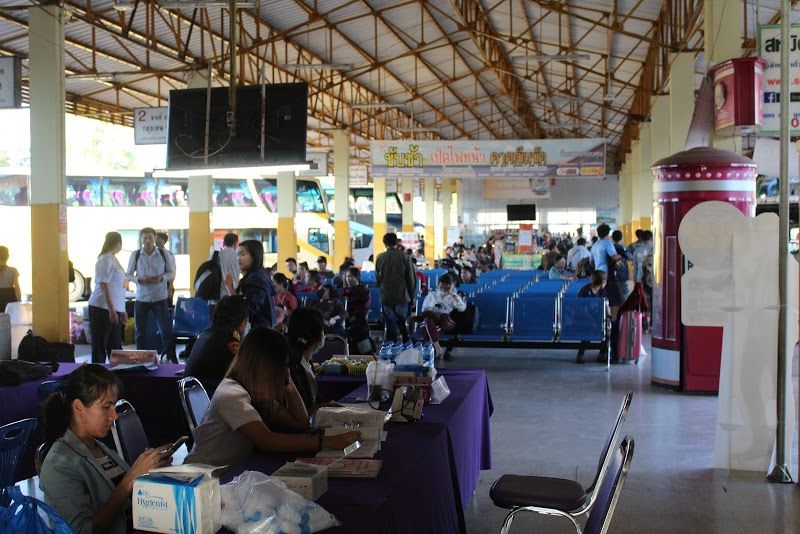
If you are living in Thailand, you will quickly learn that bus travel is one of the main and cheapest forms of travel. You can take a four hour trip for roughly 5 USD. The buses might not be as glamorous as air travel, but they will show you more of the countryside and save you a few bucks. If you’ve opted for a bus trip throughout Thailand, then here is some helpful information you will want to know.
The Four Tiers of Thailand Buses
From our experience, we’ve been able to discern 4 different tiers of buses in Thailand: minibusses, non-air-conditioned buses, air-conditioned buses, and the VIP bus.
The minibus is most often for short distances. For example, we often travel from Nakhon Phanom to Mukdahan, which is only about an hour away. Since it’s close minibusses leave roughly every 30 minutes. They are intended to fit about 15 people but are capable of holding up to 20, even if it includes people standing in the rows. We’ve rarely traveled with more than 12 people in a minibus, but on holiday weekends they can get packed. The minibusses are typically air-conditioned, generally comfortable, and faster than larger busses. As for comfort, it really depends on the minibus, some have more leg room than others. The price is also affordable running 80 ($2.50) baht one-way per person.
The next tier is the non-air-conditioned buses. From what we can gather, these buses are primarily used by locals, and we’ve never been directed toward one. If you are were trying to get to a remote location or village, then you might have to use one of these, but it would probably be more comfortable to arrange a private taxi or tuk-tuk. As for a price, I can’t imagine it being very high, not more than 50-60 baht a fare.
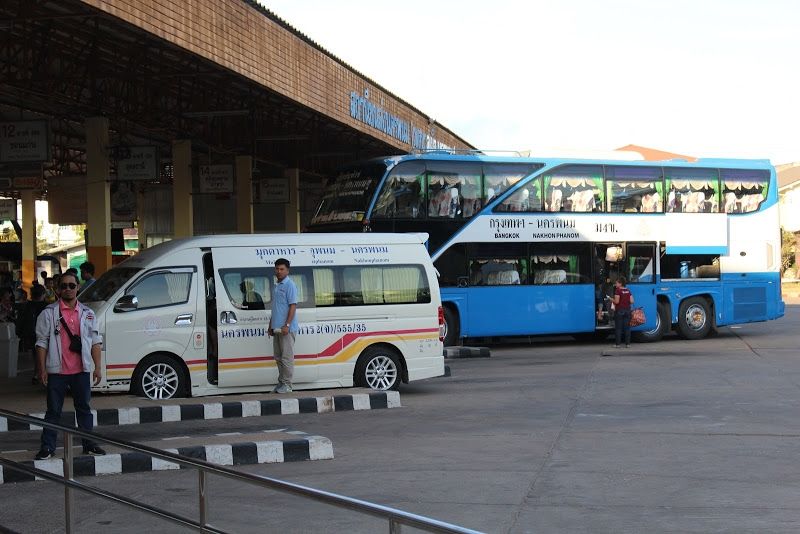
Air-conditioned buses are by far the most common. These buses run from city to a city. They aren’t direct trips. They will stop at most major stations and regularly pick up travelers along the road and in small villages. They are generally comfortable, although it really depends on how well the bus is air-conditioned. We’ve had better and worse experiences. Something to keep in mind with these buses is they always take longer than you think. For example, we made a trip from Nakhon Phanom to Udon Thani. The trip by car should take roughly three hours, but it took us four and a half. We made one major stop at a station in Sakhon Nakon about an hour in. After that, we just had short stops to pick up travelers. The trip overall wasn’t bad. The air-conditioning was fine and if you are prepared for it takes longer, then it isn’t as stressful. The fare for the trip was 150 baht ($5). If you want to know some more tips and tricks about bus travel, check out this article about bus travel in Thailand.
Finally, there is the VIP bus. These buses run from big city to big city. For example, you can find VIP buses to Chiang Mai, Bangkok, and Pattaya from most major bus stations. You can also find them to some other smaller cities as well, but we have less experience taking those. These are also sometimes referred to as sleeper buses when they are overnight. They by far offer the most comfortable trip. The air-conditioning is always good, they give you plenty of space, and even provide meals. The VIP service will vary based on the company. We’ve had services offer us onboard meals, while others give us meal vouchers for local restaurants. Some offer snacks throughout the journey, while others only give you one snack at the beginning. Some offer you a special drink and moist towel at the end and others will only give you water. It all depends on the company. Two other benefits these buses offer are the directness and bathroom. While the air-conditioned buses stop all the time, the VIP bus will rarely stop, typically only stopping at major stations or for meals. They also have a bathroom. While it isn’t luxurious, it is still a nice emergency option. We recommend taking these buses. They are worth the added expense. An average trip to Bangkok costs us about 700 baht per person ($21).
Are there top bus companies?
The two companies we’ve used the most are Nakhonchai Air and Phet Prasert. We’ve used them for overnight sleeper buses to Chiang Mai from Nakhon Phanom (16-hour trip) and from Bangkok to Nakhon Phanom (14-hour trip). In our experience, Nakonchai Air provides better meals and overall service, but they don’t run buses out of our city.
We’ve heard good things about other companies like Greenbus and the Transport Co. While we’ve never used either of these personally, the reviews are generally good, and they could be really helpful if you don’t have access to Nakhonchai Air or Phet Prasert.
Where should you get tickets?
In our experience, the best place to get your ticket is the bus station. You can purchase by phone or online, but I don’t trust all of the sites and don’t have the language skills to get them on the phone. Instead, we choose to buy them directly at the bus station. When we are traveling shorter distances, we typically buy them the day we leave. So far this has been fine, even on holiday weekends. With longer trips, we prefer to buy them in advance. If you are traveling overnight, I would recommend you purchase a ticket a few days in advance. If you are traveling overnight on a holiday weekend, then get it at least a week in advance. One time when traveling to Chiang Mai, we got the last two tickets on the bus, even though we were buying them a week in advance!
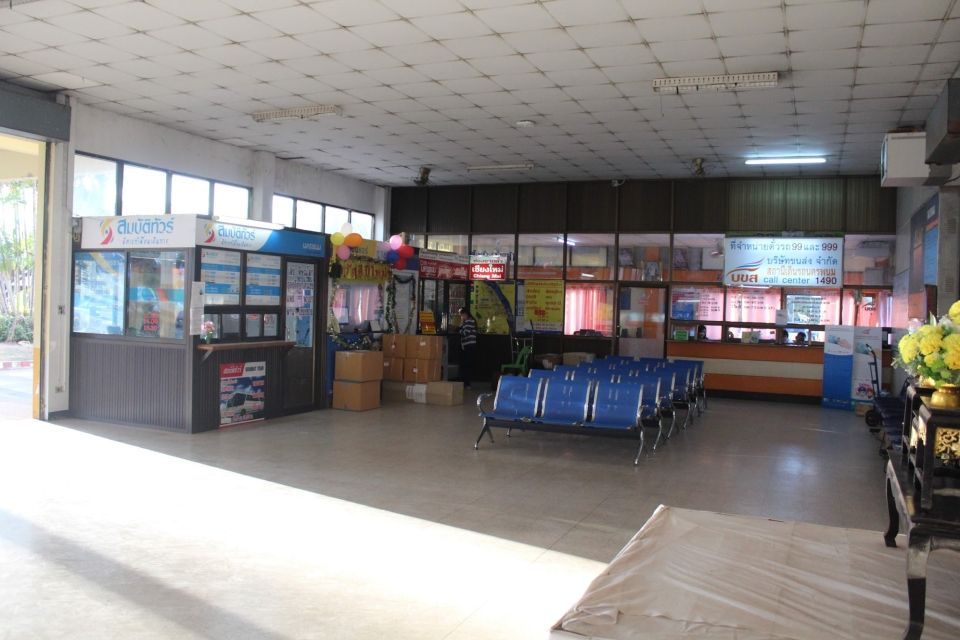
Importance of watching your luggage (theft happens often on buses)
As for the luggage, we tend to keep our valuables with us. We stow our larger packs under the bus. Before surrendering our packs we remove any technology or valuables, opting to keep them on board with us. They typically give you a luggage tag or some sort of receipt for the stowed bag. Hold onto it to prevent arguing with the bus driver when unloading. Sometimes there are overhead bins, but most of the time we just keep the bag at our feet. It helps us to sleep at night knowing our passports, money, and laptops are all within an arms reach. We’ve not encountered much crime in Thailand, but I’d rather not take a bet on human nature.
Embarking on a bus trip through Thailand is no small feat, but it will definitely earn you some cred in the travel community. The experience isn't always easy, but if you are looking to save some cash and still see all that Thailand has to offer, then these buses may be your best option. Hopefully this information will help you make decisions about how you want to plan your trip.
Related Posts
Unexpected Things I Wish I Knew Before Moving to Thailand: The Ultimate Guide to Living in Thailand
I'm sure you've read enough big-picture descriptions of daily life as an American expat living in Thailand. Now, indulge in some of the quirks and seemingly small idiosyncrasies that define daily life here, based on my personal experience living right outside of Bangkok.

Teaching English Abroad: Thailand vs. Hungary Comparison
Meet Sarah- a CIEE Teach Abroad & TEFL Alum! 😊 Hi, I’m Sarah! I’m originally from New Jersey, but for the last 4 years I have been traveling all over... keep reading

Rewriting My Top 10 Reasons: What a Year in Thailand Taught Me
Revisiting my First Blog Post If you scroll through my blog posts, you will find my first post: Why to Teach English in Thailand: My Top 10 Reasons. For anyone... keep reading
